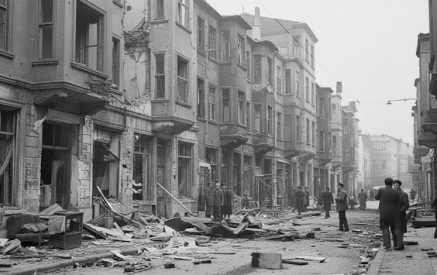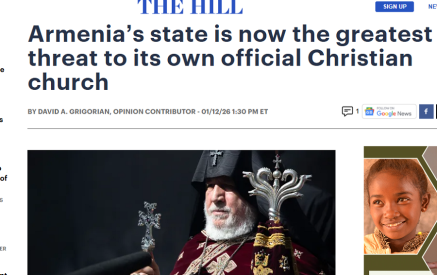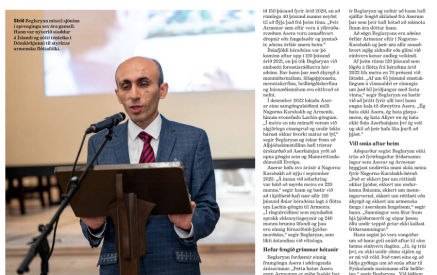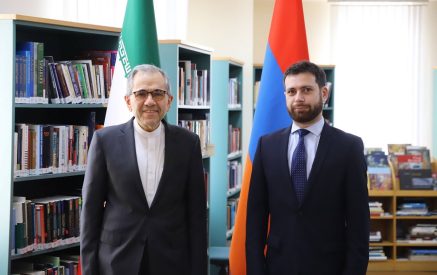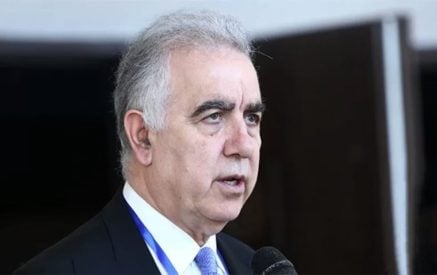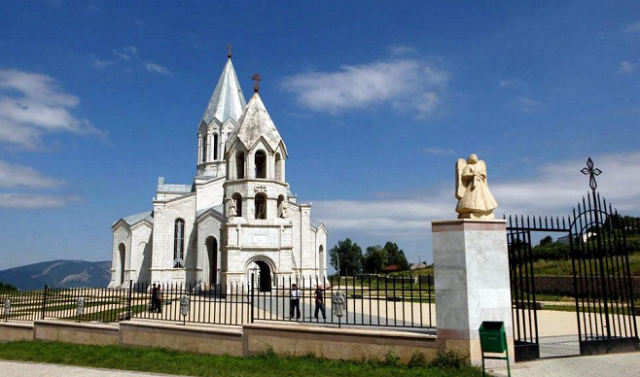The Armenian Mirror-Spectator. Academics call on global institutions to save Armenian heritage before it’s too late
NEW YORK (GLOBE NEWSWIRE) – The end to active combat in the 2020 Nagorno Karabakh war is far from the end of the war on a key victim: the rich and irreplaceable cultural heritage of Artsakh, as the republic is known to Armenians.
Only two years ago, Armenian art, history, and culture were celebrated by some of the world’s most acclaimed cultural institutions. Armenia! at the Metropolitan Museum of Art was a major international exhibition of Armenian medieval art. The wonders on display broke attendance records, earned critical praise, and demonstrated the major contributions of Armenians to world civilization. The Smithsonian Folklife Festival celebrated Armenian artistic and cultural traditions during its annual interactive exposition on the National Mall in Washington DC, drawing record numbers. That same year, the global consortium of French-speaking nations gathered in Armenia’s capital of Yerevan for the Summit of the Francophonie, hosting hundreds of world leaders, visitors and the international media.
Now, just two short years later, the world looks away as Armenian art, architecture, and history are being destroyed. On September 27, 2020, Azerbaijan launched a large-scale military attack on the Republic of Artsakh. Turkey, which continues to deny its genocidal project of the annihilation of the Armenian people perpetrated in 1915-1922 in their historical homeland, has lent its full political and military support to Azerbaijan in this latest act of aggression.
Read also
While the war was just brought to a sudden end by Russia, for over a month, the Republic of Artsakh suffered dire civilian and military casualties. The continuous shelling with cluster bombs and other artillery layed waste to homes, hospitals, and schools. The aggression has also been targeted at heritage sites, with the aim to erase the unique cultural contributions of the Armenian people and their history in the region.
On October 8, 2020, Azerbaijani forces launched two intentional assaults on the Holy Savior Ghazanchetsots Cathedral, causing significant damage. Located in Shushi, the cultural capital of Artsakh, the cathedral is a masterpiece of nineteenth-century Armenian architecture and a landmark of Armenian cultural and religious identity. Online photos show a gaping hole in the masonry vaults, with the floor and pews covered in debris.
Shushi Cathedral is just one of thousands of heritage sites in Artsakh now in grave danger. Most of the structures are much older, dating as early as the fourth century AD, when Armenia converted to Christianity. These extraordinary architectural monuments feature ancient inscriptions, wall paintings, and sculpture. They are not only artistic and historic treasures, but also material evidence for the long history of Armenians in the region. With every cluster bomb, with every hour that the international community is silent and passive, we lose a precious memorial, destroyed forever.
The bombings also targeted archaeological sites, damaging evidence for ancient habitation, including fortification and ecclesiastical architecture and precious artifacts.
This wholesale destruction is part of a violent denialist policy by Azerbaijan that includes the intentional elimination of Armenian cultural heritage in Artsakh. Both Azerbaijan and Turkey have continuous, well-documented policies of destroying the Armenian cultural heritage found in their territories. Azerbaijan’s 1997–2006 erasure in Nakhichevan of its Armenian culture, with more than 89 medieval churches, 5,840 khachkars, and 22,000 historical tombstones is illustrative in this regard. The 16th General Assembly of the International Council on Monuments and Sites (ICOMOS) adopted a resolution in October 2008 expressing its grave concern regarding these acts of cultural vandalism. We call attention, by contrast, to Armenia’s efforts to restore the Gohar Agha Mosque in Shushi.
Is the Monastery of Gandzasar, a crown jewel of thirteenth-century Armenian architecture, fated to similar oblivion? What about the fourth-century Amaras Monastery, the location of the first school to use the Armenian script and the burial place of Saint Grigoris, grandson of the patron saint and evangelizer of Armenia, Gregory the Illuminator? Grigoris’s fifth-century tomb is one of the earliest Armenian Christian funerary structures surviving.
What will become of the Monastery of Dadivank, a large, picturesque complex of buildings and carved cross-stones dating from the thirteenth century? The main church, with its delicate exterior arcades and sculpted donor portraits, shelters an extraordinary set of interior frescoes showing sacred and historical figures and Armenian inscriptions. While recent restoration efforts by an Italian team have sought to stabilize its deteriorated state, their work is now under imminent threat of reversal.
These are only a few examples of the thousands of sites across Artsakh that are now vulnerable to destruction. Once they are gone, it will be too late. We acknowledge the value of cultural heritage and recognize that the loss of any one culture constitutes a harmful impoverishment of the heritage of all the nations of the world, and not only of the nation to which the cultural property belongs. We call upon UNESCO, ICOMOS, The Blue Shield, World Monuments Fund and other international organizations committed to the conservation and protection of cultural heritage sites to assist immediately in safeguarding and monitoring these monuments and documenting them for posterity.
Prof. Christina Maranci, Tufts University (US)










